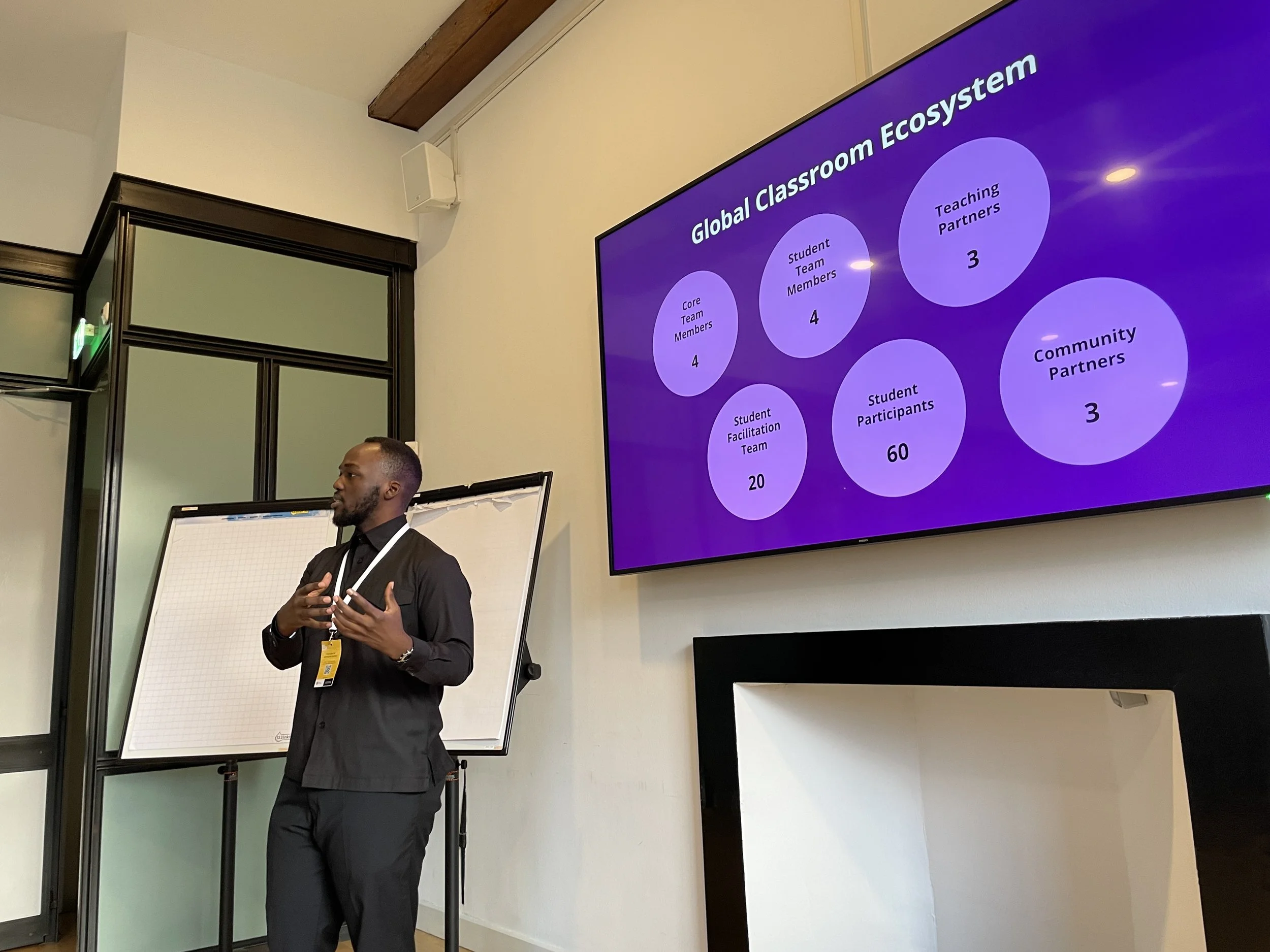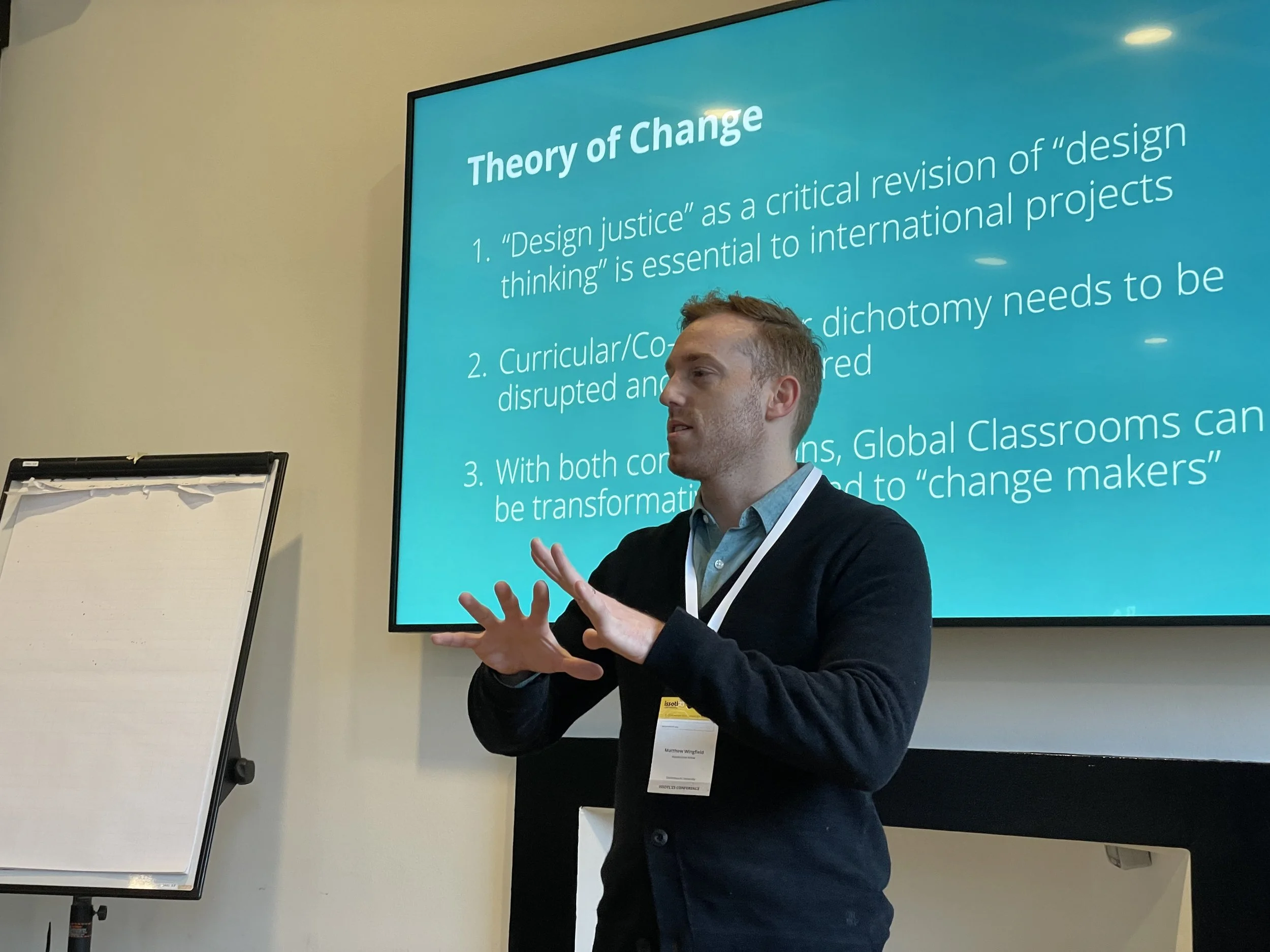15 November 2023
Critical analysis of design thinking as a transformative pedagogical tool
Workshop Abstract
The Global Classroom for Democracy Innovation (GCDI) is a project that brings together students from four continents to work through a 5 week intensive engagement around design thinking to develop projects that aim to address a local example of a ‘wicked problem’, such as threats to democracy on a global level or climate change (Manzini, 2015). Underlying this project is a critical engagement with hegemonic forms of design thinking in order to highlight what Costanza-Chock (2020) has called design justice. Furthermore, as students come from a diverse range of backgrounds, international power dynamics often underlie such collaborative spaces (Behari-Leak, 2020). We posit that by developing spaces of extended engagement with diverse groups of students, through the lens of design justice, students are more likely to develop skills and competencies which make them ‘change makers’ (Freire, 1970). In this workshop, after a short presentation highlighting some of these insights and the methodologies that gave rise to them, we invite workshop attendees to participate in a facilitated “mini design jam”, where they will experience a condensed, rapid-fire version of the GCDI Design Jam process. We follow this experience with a guided dialogue, with key questions pertaining to the potentially transformative and impactful outcomes of this kind of participation in the classroom, along with its challenges and opportunities for improvement.
Workshop Reflections
Our workshop invited ISSOTL 2023 educators from around the world, across various disciplines, to reflect on transformation in their own pedagogy by engaging in an empathy map exercise and mini design jam. A live synthesis combining findings from several small working groups revealed three distinct insights for creating the conditions for transformation in education spaces:
First, an awareness that something better is possible must be present. This aligns with the hopefulness and optimism (grounded in reality) that design thinking offers.
Second, a challenge or state of adversity typically occurs, triggering transformative responses and action.
Finally, awareness of transformation is not usually typical in the moment, but occurs later on, upon reflection. We may not be aware of the shifts in perspective that occur when engaging in difficult challenges, making transformation difficult to measure immediately following a specific course, for example.
We offer design thinking as one approach to creating the conditions for transformation in the classroom, and we are grateful to all of the participants who experimented with us at our ISSOTL workshop.
References
Behari-Leak, K. 2020. Toward a Borderless, Decolonized, Socially Just, and Inclusive Scholarship of Teaching and Learning. Teaching & Learning Inquiry, 8(1).
Costanza-Chock, S. 2020. Design Justice: Community-Led Practices to Build the Worlds We Need. Cambridge, MA: The MIT Press.
Freire, P. 1970. Pedagogy of the Oppressed. New York: Continuum.
Manzini, E. Design, When Everybody Designs: An Introduction to Design for Social Innovation. Cambridge, MA: The MIT Press.


